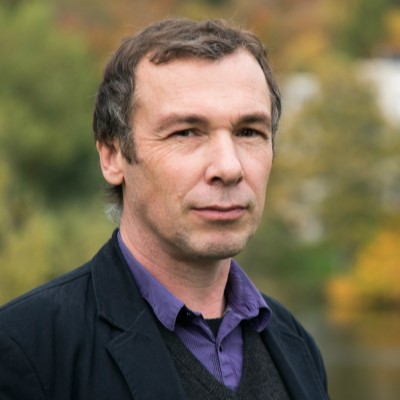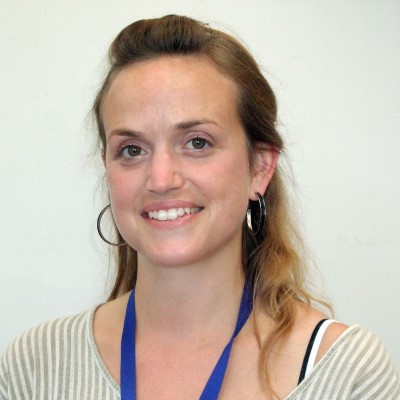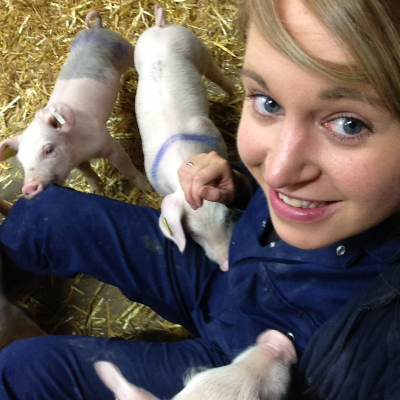CIEL | Meet the Scientist
Dr Nicola Lambe
Sheep Geneticist

What project/s are you currently working on?
The sheep genetic projects I’m involved in are mainly associated with breeding sheep to improve carcass and meat quality, alongside traditional production and reproductive traits, for both hill and terminal sire breeds across different production systems. These projects also involve evaluation of different techniques for measuring carcass and meat quality in live animals and carcasses, including ultrasound, CT scanning, video image analysis and several mechanical, chemical and sensory meat quality tests. I am also looking at new traits in sheep, such as greenhouse gas emissions, disease resistance and feed efficiency.
What capability are you drawing on to deliver the research?
I manage the SRUC Mobile CT unit, which has been operating since 1997, resulting in a huge archive of CT images from ~20,000 live sheep, as well as carcasses, meat cuts and a variety of other products and objects. This provides a great opportunity to test new measurements and processes (e.g. deep learning) to extract novel traits that could be used for future breeding.
The CIEL-funded Mobile CT Unit complements the sheep feed intake monitoring facilities at SRUC which are also supported by CIEL. These portable units allow individual feed intake data to be recorded on farm. We can link feed intake data to information on body composition change and rumen volume, as well as pedigree, genotype and performance data, to better understand the genetics of traits like feed efficiency and greenhouse gas emissions.
The SRUC research farm network, which encompasses a range of systems and breeds, is vital in being able to test and exploit these new technologies. Likewise, access to large research and commercial databases, servers and storage are essential. However, the most important capability that I draw on is the expertise of skilled technical, research and consultancy staff at SRUC, to make sure research is of high quality and relevant for end-users.
What would be your ideal research project, assuming no barriers!
One of the areas that I would love to fully investigate is how GHG emissions and feed efficiency are related to the ability of sheep to survive, reproduce and be productive in extensive production systems with poor quality vegetation, unsuitable for other agricultural production.
Could we breed sheep that require fewer inputs, with lower greenhouse gas emissions, that produce more, good-quality lamb meat in an extensive (e.g. harsh hill) environment?
The use of various existing technologies, such as sensors, automated EID-enabled recording systems, CT scanning, individual feed intake recording equipment, portable greenhouse gas accumulation chambers, genomics and others could enable this type of large-scale research. Although this wouldn’t be cheap, the understanding and benefits gained would markedly outweigh costs!
How did you arrive at doing what you do now?
After graduating with a degree in Environmental Biology, I joined SAC Consulting as a research assistant in the poultry department for a couple of years, before moving to their Hill and Mountain Research Centre as a technician on the long-running Hill Sheep Breeding Project. I have been involved in SAC/SRUC hill sheep research ever since, completing an MSc in Animal Breeding and Genetics and a PhD on hill ewe body tissue mobilisation connected to that project. I am still based at the HMRC at SRUC Kirkton, although I also lead projects based at other SRUC sites, focusing on various aspects of sheep genetics and production, as well as managing the CT unit in Edinburgh.
What is the significance of the SRUC Hill Research Farm where you are based?
SRUC’s Hill and Mountain Research Centre, with its team of systems-scale researchers, is based at Kirkton and Auchtertyre Farms, a 2200 ha Highland estate near Crianlarich in the west Highlands of Scotland. The site ranges from high quality and productive grazing to high altitude (over 1000 metres above sea level) semi-natural habitats of high conservation value. Livestock consist of around 1400 breeding ewes and 27 Aberdeen Angus crossbred cows.
The team’s work aims to seek economically, environmentally and socially sustainable land management systems with an emphasis on reducing greenhouse gas emissions.
Current interests focus upon:
• Developing precision livestock farming approaches
• Genetic based livestock breeding programmes
• Evaluation of the public goods associated with upland land use systems
• Bio-economic modelling of livestock in upland environments
• Maintenance and enhancement of biodiversity
• Assessment and mitigation of greenhouse gas emissions
• Developing innovative agro-forestry systems
My work has focused mainly on the first two bullets above and I am particularly proud of my involvement in the Hill Sheep Breeding project, which developed and tested the first genetic selection index for hill sheep. This was proven to increase productivity and economic returns from hill sheep systems in a cumulative and sustainable way. This formed the basis of the national hill sheep index used by Signet to date and has been successfully employed by progressive commercial hill sheep farmers around the UK.
The farm, and the large amount of data it produces, are also used extensively for teaching, training and demonstration purposes, as well as research. It is a beautiful place to work and I hope to get back on farm one day soon!







